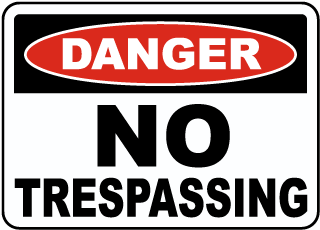In this chapter, we will discuss some of the ways that signs communicate their meaning and how that is different for signs. The first point is that different signs have different purposes. A sign that says 'High Voltage! Do not touch' has a different, and much more urgent, purpose than a sign that says 'Thank you for your patronage'. So when translating a sign, our first challenge is to make sure we know the purpose. The purpose of the sign will determine almost everything about the sign we want to make
Danger!
Take a look at these signs.
sign 1 
sign 2 
sign 3 
What do you notice about them? Even though the signs are in different language, they all indicate some sort of danger. The language is direct. Any pictures emphasize what will happen if the sign is not followed. The fonts are large and bold and the colors are bright, with red or yellow being a color often used. Now, stop for a moment and imagine if these signs were used to tell people how to pay their bill. Or how to order from a restaurant.
Just because these signs are direct does not mean that you should not use direct language. Imagine if an emergency door was connected to an alarm. Or an area of a hotel was under construction and you did not want guests to enter. In the recent Kumamoto earthquake, many signs needed to be made and posted to indicate dangerous places, falling bricks or masonary, or other dangers.
The purpose of the sign also determines a lot of other points about signs. A sign about something dangerous is often in red. The size and the font also relay meaning, with a serious font and large size indicating something important to notice, and a more relaxed font and a smaller size may not require people do to something, but just give them some extra information. The first step to planning your sign is to consider the purpose of your sign.
